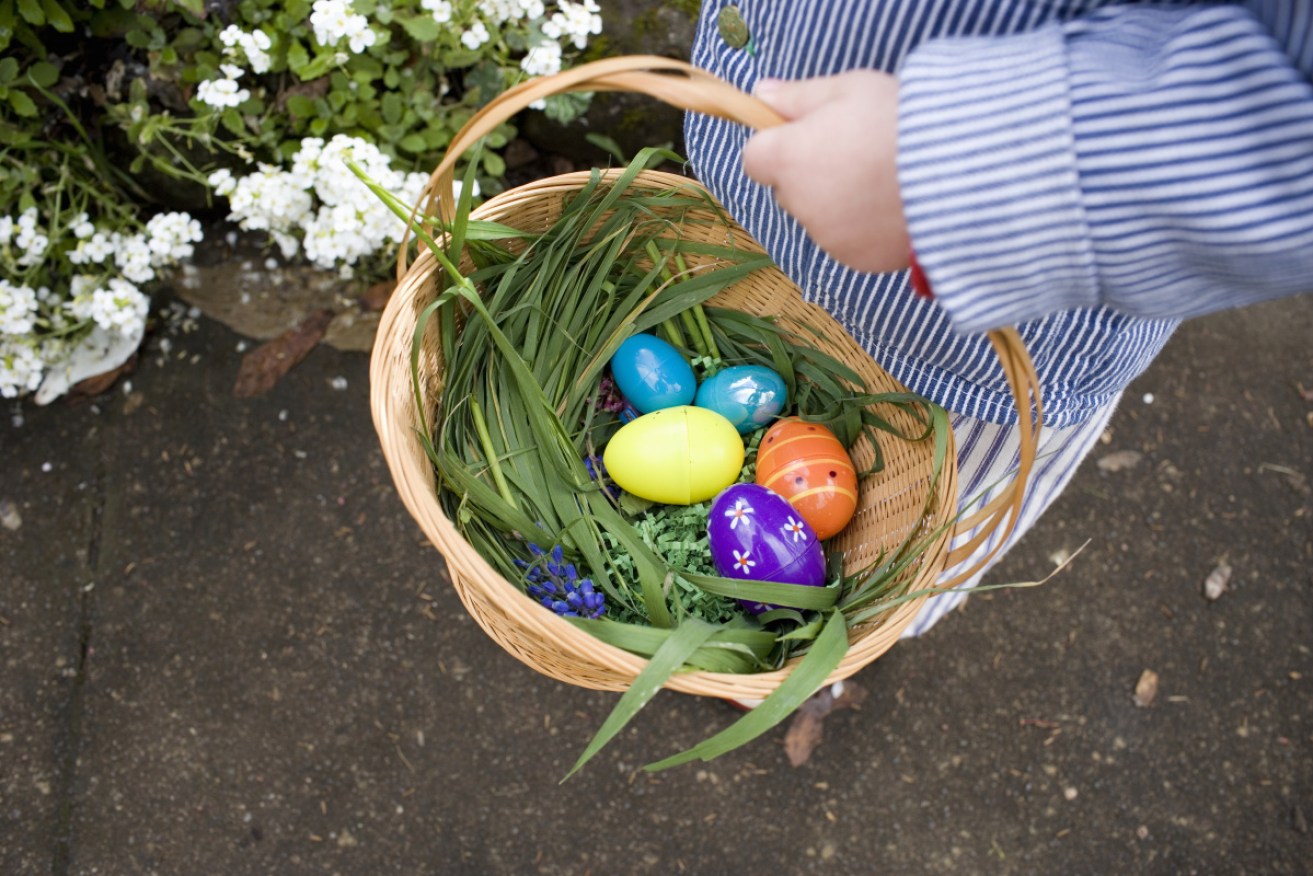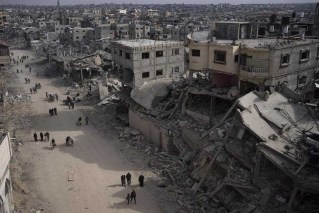Rockets, fires, knobs of butter shaped like lamb: Easter’s oddball traditions


How will you be celebrating Easter? Photo: Getty
The basic Easter celebration formula isn’t a bad way to spend a weekend: Fish (and chips) on Good Friday, lounging around in a daze on Saturday in sympathy with Christ lying in his tomb, then chicken and chocolate on Sunday.
Ah, the Aussie way. The whole thing goes by on slow, predictable burn.
But for a little eccentric pep, here are some cute, colourful, slightly odd Easter rituals we could draw upon (with deep respect, of course) for something different.
In Scotland, people roll eggs down a hill: The egg that travels the farthest without breaking is the winner.
In the Czech Republic, young men go door to door with willow switches and “lightly whip” young women to promote their fertility. (We can’t condone this one.)
In Norway, the locals stay at home and read murder mysteries. No kidding.
But our favourites are as follows:
Rockets, man
In the town of Vrontados, on the Greek island of Chios, there are two churches sitting on hilltops about 400 metres apart.
At the stroke of midnight, heralding Easter Sunday, rival congregations – from the Angios Marcos and Panaghia Ereithiani churches – gather near their places of worship and fire tens of thousands of rockets at one another across the valley.
The idea isn’t to hit the rival crowd, but to ‘ping’ the bell tower of the church on the other side. The parish with the most hits is named the winner.
This Easter battle is said to have begun centuries ago, and was originally fought with cannons, until the Ottoman Empire banned their use in 1889.
From that point, wooden rockets loaded with gunpowder were adopted.

The Easter Rocket War in Chios, Greece. Photo: Getty
The church buildings and neighbouring houses are boarded up and covered with metal sheets and mesh.
Still, sacred plaster tends to get chipped and “minor injuries” among the rocketeers are inevitable.
Town residents are divided over the tradition known as Rouketopolemos – or ‘rocket war’. For some it’s violent and crazy. For others, it’s a significant source of income buoyed by tourists.
Keep your eyes on your feet
Each year, the stone streets of historic Antigua – the former capital of Guatemala, and now a UNESCO World Heritage site – are prettied up with richly-coloured alfombras, or carpets, ahead of the city’s Good Friday processions.

The city of Antigua covers its streets in intricate carpets for the Good Friday processions.
The carpets, which are made from flowers, coloured sawdust, fruit, vegetables and sand, decorate most of the town’s roads.
The most demanding aspect of making the intricate alfombras is in the design, which takes months of work.
But they are soon enough destroyed when the processions on Good Friday – featuring thousands of people in purple robes – walk over them.
This quick destruction is seen as a sacrifice in sympathy with that of Jesus.
In fact, as the patterns are kicked to pieces, cleaners follow on, removing all traces of their loveliness.
How scary, if they dropped Mary

Devotees sprint across the square with the statue of the Madonna of Loreto. Photo: Getty
Don’t try this on a slippery stone square: Members of the fraternity of St Mary of Loreto carry the statue of the Virgin Mary at a full sprint through the streets of Sulmona in Abruzzo in the centre of Italy.
The traditional Easter procession is called “La Madonna che scappa” or the running Madonna.
The idea is to capture the urgency of the Virgin Mary as she catches sight of the resurrected Christ for the first time.
As the sprint takes off, doves are released and this is where local folklore kicks in: The direction taken by the doves is interpreted as a good or bad omen for the spring harvest.
Flaming hello
Since 1847, the Texan town of Fredericksburg has set fire to 22 hilltops to celebrate on the Saturday night before Easter Sunday. The story behind it might even be true.
According to local folklore, the custom originated when Comanche scouts lit signal fires to communicate with their chiefs, who were negotiating a treaty with John O Meusebach, the German-born leader of the town.

Residents of Fredericksburg, Texas, celebrate Easter by setting fire to hills.
The fires were said to frighten local children – until one of the town’s women explained the Easter Bunny and friends had lit the fires to cook the Easter eggs for the next morning.
Over time, Fredericksburg residents came to believe this was a genuinely custom associated with the founding of the town.
In fact, the original German settlers brought the custom with them. The people of north-western Germany have long practised the custom of lighting Easter-eve fires on certain hills.
Indeed, the custom goes back to pre-Christian times and pagan celebrations of springtime.
Lamb soft as butter

In Russia and Poland, knobs of butter are shaped like lambs to keep Satan at bay.
Easter lambs shaped out of butter are meant to keep Satan away. In fact, it’s said the Devil can take any form, except that of the lamb.
The tradition has quietly gone global via Eastern European Catholic immigrants, and can be traced back to Poland, Slovenia and Russia.
There’s a bit of symbology going on here.
The lamb represents Jesus, also known as the Lamb of God.
A red ribbon around the lamb’s neck represents the Blood of Christ.
A red and white flag is often used to decorate the lamb with the words “Alleluia” which refers to the joy of Christ’s resurrection.
Peppercorns are used for the eyes to signify ‘God’s lighting of the world’.
According to custom, Eastern European families moulded their lamb out of butter and took it to church on Holy Saturday to be blessed.








